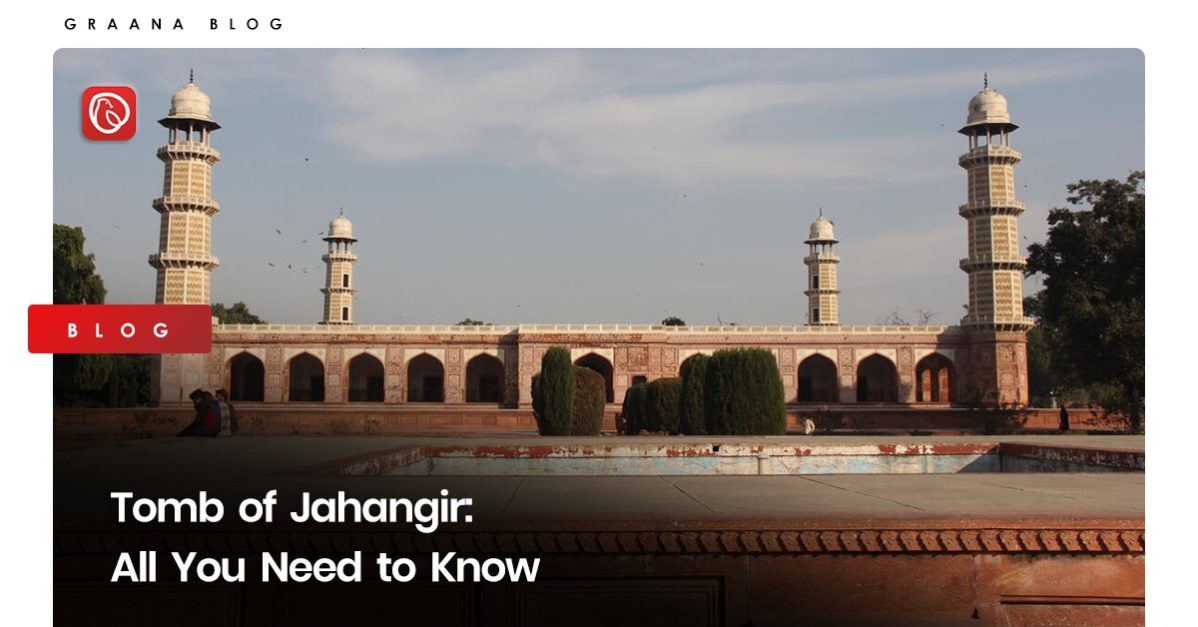
The impressive architecture of the tomb of Mughal emperor Jahangir has made it a significant tourist attraction in Lahore. Graana.com brings you a detailed overview of tomb of Jahangir, architectural marvel.
In 1627, the Mughal emperor passed away while travelling across Kashmir. The Mughal empress Nur Jahan, Jahangir’s wife and one of the most powerful women in the Indian subcontinent’s history, ordered the construction of the tomb of Jahangir.
The selected location was a large garden called Shahdara Bagh, which had been Jahangir’s favourite retreat during his lifetime. A mosque and a sizable man-made lake were added to the garden to create a mausoleum compound.
After ten years, the tomb’s construction was finally finished in 1637.
It was built under the direction of Nur Jahan and featured calligraphy, intricate floral and geometric designs, and tile work. A portrait of Jahangir was also added to the tomb’s interior.
The tomb’s dome, which rises to a height of 30 metres (98 feet), was constructed of marble and red limestone. A garden that contains other tombs and monuments, including those of Nur Jahan and her brother Asif Khan, surrounds the mausoleum.
Over the ages, the tomb of Jahangir has undergone numerous renovations, including a significant restoration during the British colonial period in the early 20th century. The Department of Archaeology and Museums of the Pakistani government is responsible for the tomb’s maintenance. It is a major cultural landmark and a popular tourist destination in Lahore.
Jahangir’s mausoleum is located in Shahdara Bagh, a garden compound outside of the city on the banks of the Ravi River. The tomb is about 10 kilometres (6.2 miles) away from the city centre, and is easily accessible.
Here are a few ways to get to the tomb:
The tomb of Jahangir is a stunning illustration of the Mughal architectural style, which emerged in India in the 16th and 17th centuries.
The tomb’s architecture includes the following details:
Over the years, the tomb of Jahangir has undergone numerous renovations, the most significant of which have been listed below:
The tomb is a stunning memorial to Jahangir and his legacy, and also serves as a demonstration of the craftsmanship of Mughal builders.
For more informative content, visit the Graana blog.
Islamabad: The Shaheen Chowk underpass is expected to be inaugurated next week after nearing completion,…
Dubai’s luxury real estate market has reached a new milestone in 2025, with a prime…
Karachi: Sindh Chief Minister Syed Murad Ali Shah has approved a development package worth PKR…
Islamabad: The Capital Development Authority raised PKR 13.52 billion on the opening day of its…
Riyadh: Saudi Arabia will allow foreigners to own property in the Kingdom starting in 2026…
Islamabad: The federal government is planning to introduce a two-year development roadmap for the capital…